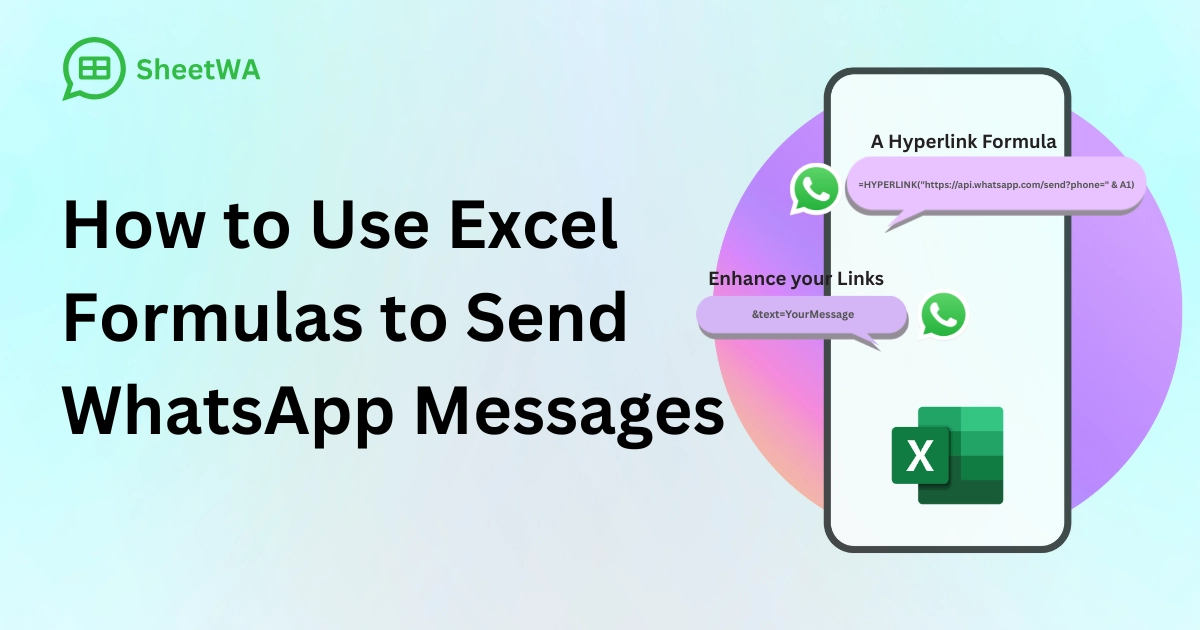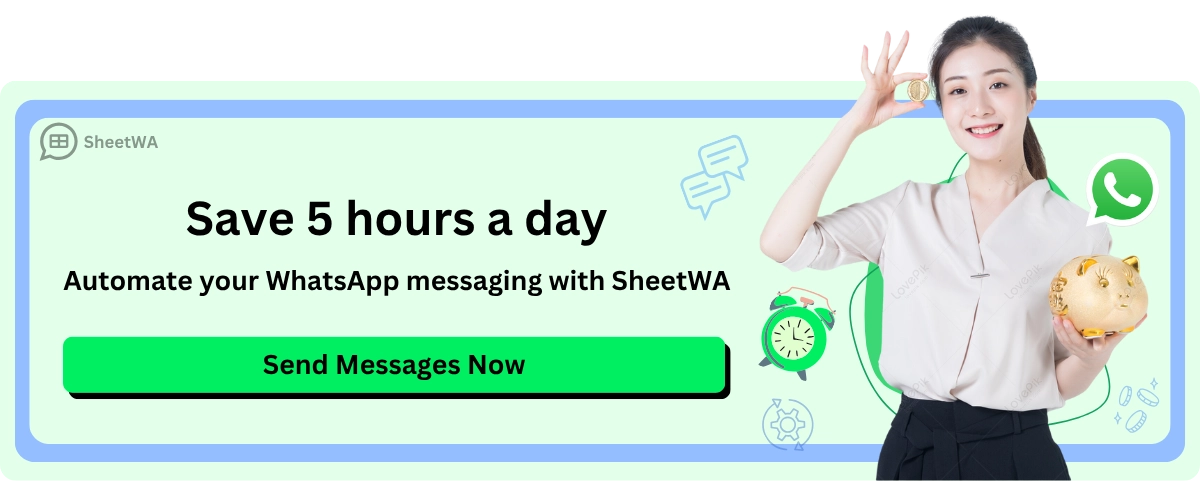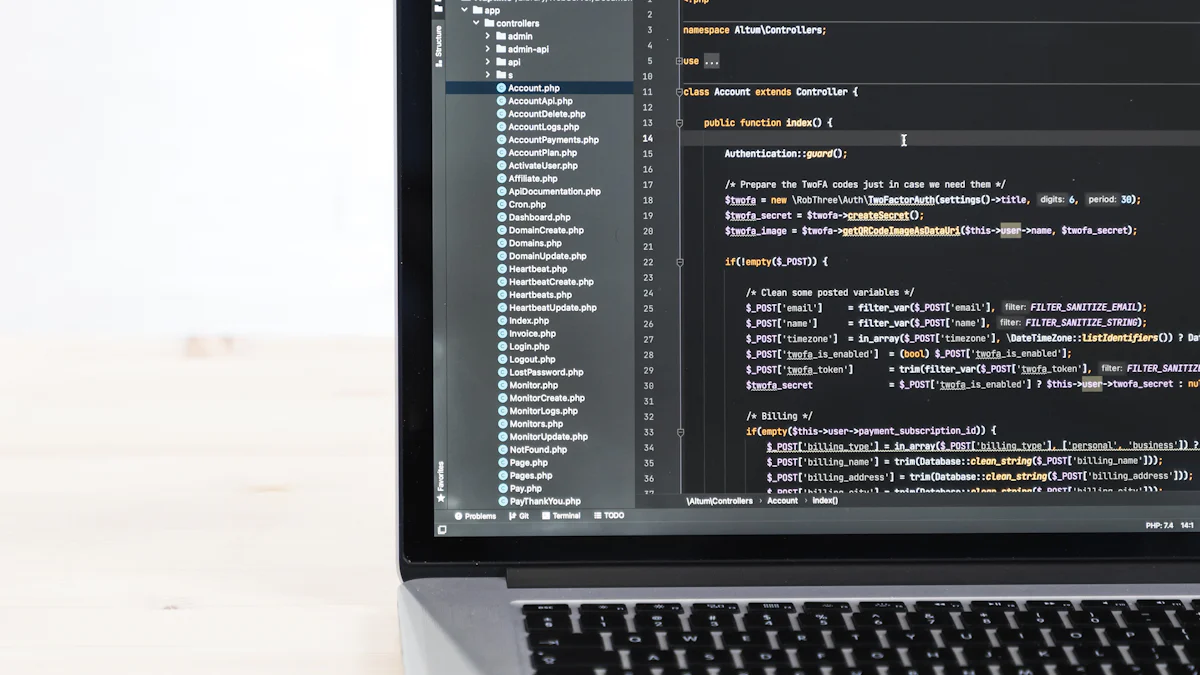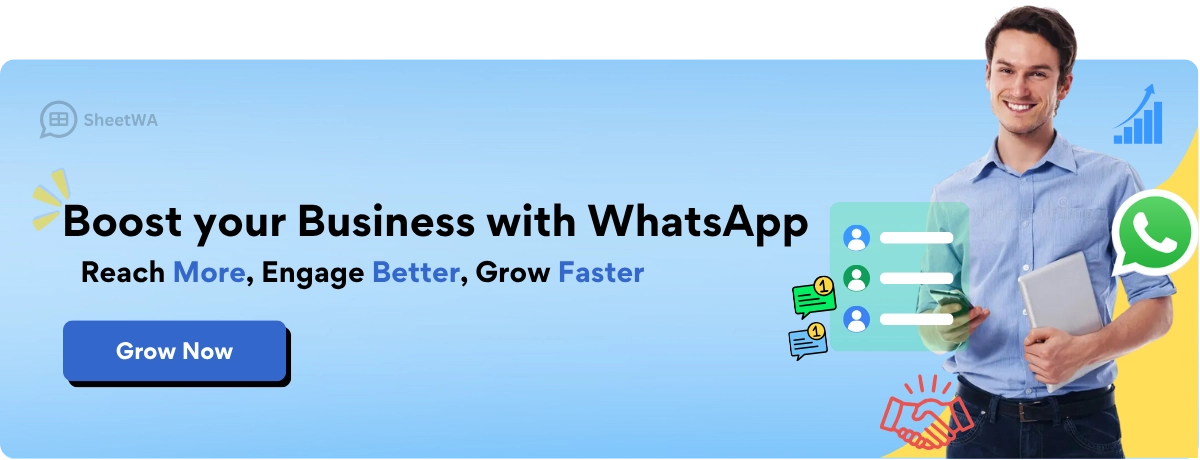
Using Excel to send bulk WhatsApp messages can revolutionize your communication strategy. Imagine reaching out to your audience with personalized messages, all from the comfort of your spreadsheet. Excel formulas make it possible to create a seamless flow of bulk messages on WhatsApp, enhancing your marketing efforts. This approach not only saves time but also allows you to send bulk unlimited WhatsApp messages efficiently. Whether you're a business looking to boost your marketing and promotion messages or an individual aiming to connect with a large group, Excel paired with a bulk sender tool offers a powerful solution. Dive into the world of unlimited WhatsApp marketing and discover how you can send bulk messages effortlessly.
Setting Up Excel for Bulk Messaging

Read More : Excel vs Google Sheets: Best for WhatsApp Integration
Setting up Excel for sending bulk WhatsApp messages is a straightforward process that can significantly enhance your communication strategy. By organizing your contact lists and crafting message templates, you can efficiently send bulk messages to your audience. This section will guide you through preparing your contact lists and creating message templates to streamline your bulk messaging efforts.
Preparing Contact Lists
To start, you'll need to prepare your contact lists in Excel. This step is crucial for ensuring that your bulk WhatsApp messages reach the right recipients. Here's how you can do it:
Organize Your Contacts: Begin by listing all your contacts in an Excel spreadsheet. Include essential details like names and phone numbers. This organization will help you manage your contacts effectively.
Use Separate Columns: Create separate columns for each piece of information, such as first name, last name, and phone number. This structure allows for easy data manipulation and personalization when sending messages.
Ensure Accuracy: Double-check your contact information for accuracy. Incorrect phone numbers can lead to failed message deliveries. Make sure each number is formatted correctly for WhatsApp.
Export to CSV: If needed, export your contact list from Excel to a CSV file. This format is compatible with many bulk sender tools, making it easier to upload your contacts.

By preparing your contact lists meticulously, you set the foundation for successful bulk messaging campaigns. Excel provides the flexibility to handle substantial contact lists, ensuring you can reach your audience efficiently.
Methods for Sending Bulk WhatsApp Messages
When it comes to sending bulk messages on WhatsApp, you have a couple of effective methods at your disposal. Whether you prefer using Excel formulas or third-party tools, each approach offers unique advantages. Let's explore these methods to help you decide which one suits your needs best.
Using Excel Formulas
Excel formulas provide a straightforward way to send WhatsApp messages directly from your spreadsheet. This method is ideal if you want to personalize each message and maintain control over your communication process. Here's how you can use Excel formulas to send messages:
Create a Hyperlink Formula: Use the Excel formula
=HYPERLINK("https://api.whatsapp.com/send?phone=" & A1)to generate clickable links. These links open WhatsApp with the specified phone number, allowing you to send messages directly.Include Pre-Defined Messages: Enhance your links by appending
&text=YourMessageto the URL. This addition lets you include a pre-defined message, making the process even more efficient.Automate with VBA: For those comfortable with coding, Excel's VBA (Visual Basic for Applications) can automate the messaging process. This automation eliminates the need to open WhatsApp manually, streamlining your workflow.
Bulk Messaging with Excel: Excel allows you to manage large contact lists and send bulk messages efficiently. By organizing your data in Excel, you can ensure that each message reaches the right recipient.

Using Excel formulas to send WhatsApp messages offers a personalized touch, making each interaction feel direct and engaging. This method is perfect for those who prefer a hands-on approach to messaging.
Utilizing Third-party Tools
Third-party tools provide an alternative method for sending bulk messages on WhatsApp. These tools often offer additional features that can enhance your messaging campaigns.
What you can expect from using third-party tools:
Ease of Use: Third-party tools simplify the process of sending bulk messages. They often come with user-friendly interfaces that require minimal setup, making them accessible to everyone.
Advanced Features: Many tools offer features like message scheduling, media attachments, and batch sending. These features can save you time and effort, especially when managing large-scale campaigns.
WhatsApp Bulk Sender: Some tools act as a WhatsApp bulk sender, allowing you to send messages to multiple recipients simultaneously. This capability is invaluable for businesses looking to reach a wide audience quickly.
Compliance and Efficiency: While these tools don't guarantee compliance with WhatsApp's regulations, they often include features like random time gaps and message personalization. These features help reduce the likelihood of being flagged for unusual activity.
Utilizing third-party tools can significantly enhance your bulk messaging campaigns. They offer convenience and efficiency, making them a popular choice for businesses and individuals alike.
Optimizing Excel Sheets for Accuracy and Personalization

Optimizing your Excel sheets is crucial for sending accurate and personalized WhatsApp messages. By ensuring data accuracy and personalizing each message, you can enhance your communication strategy and engage your audience more effectively. Let's dive into some techniques that will help you achieve this.
Data Validation Techniques
Data validation in Excel plays a vital role in maintaining the integrity of your contact lists. It ensures that the data you collect is clean and minimizes errors, which is essential when sending bulk messages on WhatsApp. Here's how you can implement data validation:
Set Validation Rules: Use Excel's Data Validation feature to control what users can enter into a cell. For example, you can restrict phone numbers to a specific format, ensuring they are ready for WhatsApp messaging.
Prevent Errors: By setting rules, you prevent incorrect data entry, such as invalid phone numbers. This step reduces the chances of failed message deliveries.
Use Drop-Down Lists: Create drop-down lists for fields like country codes. This feature ensures consistency across your Excel sheet, making it easier to manage bulk messaging campaigns.
Highlight Invalid Data: Excel can highlight cells that don't meet your validation criteria. This visual cue helps you quickly identify and correct errors before sending messages.
Implementing these data validation techniques in your Excel sheet for bulk messaging ensures that your data remains accurate and reliable. This accuracy is crucial for successful communication on WhatsApp.
Personalizing Messages with Excel Formulas
Personalization is key to engaging your audience effectively. Excel formulas allow you to tailor each message, making your communication feel more personal and direct. Here's how you can use Excel to automate message personalization:

Combine Two Columns’ Data: Use formulas to merge data from different columns. For instance, combine first and last names to create a personalized greeting in your messages.
Leverage Excel Formulas: Utilize formulas like CONCATENATE or TEXTJOIN to insert dynamic data into your messages. This approach allows you to customize each message based on the recipient's information.
Create Dynamic Templates: Design message templates that automatically pull data from your Excel list. This method ensures that each message is unique and relevant to the recipient.
Use Data Extractor in Excel: Extract specific data points from your Excel file to include in your messages. This feature helps you tailor messages to individual preferences or past interactions.
By personalizing your messages with Excel formulas, you can create a more engaging and meaningful communication experience. This personalization not only enhances your messaging strategy but also strengthens your connection with your audience on WhatsApp.
Legal Considerations and Compliance
When sending bulk messages through WhatsApp, understanding the legal landscape is crucial. You want to ensure that your communication strategy aligns with WhatsApp's terms and policies. This not only protects your account but also fosters trust with your audience. Let's explore the key aspects of legal compliance when using Excel for bulk messaging.
Understanding WhatsApp's Terms of Service
WhatsApp's Terms of Service lay the groundwork for how you should use the platform. It's important to familiarize yourself with these terms to avoid any pitfalls. Here are some key points to consider:
Consent to Use WhatsApp: By using WhatsApp, you agree to its terms. If you don't consent to updated terms, you won't be able to use the service. This is a fundamental aspect of maintaining your account's integrity.
Avoid Sending Spam: WhatsApp strictly prohibits spam or unsolicited messages. Sending such messages can lead to your account being flagged as spam or even suspended. Always ensure that your recipients have opted in to receive your messages.
Respect Privacy: Before sending bulk messages, make sure you have the consent of your recipients. This respect for privacy not only aligns with WhatsApp's policies but also builds trust with your audience.
Review Messages for Compliance: Regularly review your messages to ensure they comply with WhatsApp's policies. This proactive approach can prevent potential issues and keep your account in good standing.

Understanding these terms helps you navigate the platform responsibly. It ensures that your bulk messaging efforts remain effective and compliant.
Best Practices for Legal Messaging
Adhering to best practices in legal messaging can enhance your communication strategy. Here are some tips to keep in mind:
Obtain Clear Consent: Always get explicit consent from your recipients before sending bulk messages. This step is crucial for respecting privacy and avoiding unsolicited communication.
Use Personalization: Personalize your messages using Excel formulas. This not only makes your communication more engaging but also reduces the likelihood of being flagged for spam.
Implement Random Time Gaps: When sending bulk messages, use random time gaps between sends. This practice mimics human behavior and decreases the chance of your account being flagged for unusual activity.
Leverage Batch Sending: Send messages in batches to manage large contact lists effectively. This approach helps maintain a steady flow of communication without overwhelming the system.
Stay Informed: Keep up with any changes to WhatsApp's terms and policies. Staying informed ensures that your messaging practices remain compliant and effective.
By following these best practices, you can enhance your bulk messaging campaigns while staying within legal boundaries. This approach not only protects your account but also strengthens your relationship with your audience.
Best Practices for Effective Bulk Messaging
When you send bulk messages on WhatsApp, following best practices can make a big difference in how your audience responds. By focusing on timing and crafting engaging content, you can enhance your communication strategy and achieve better results.
Timing and Frequency of Messages
Timing plays a crucial role in the success of your bulk messaging campaigns. Sending messages at the right time can significantly boost engagement rates. Here are some tips to help you get the timing right:
Analyze Customer Habits: Look at when your audience is most active on WhatsApp. This might be during the day or early evening. Avoid sending messages late at night, as this can lead to lower engagement.
Use Data to Guide Timing: Use data analysis to identify the best times to send messages. By understanding your audience's habits, you can schedule your messages for when they are most likely to be seen.
Avoid Over-Messaging: Sending too many messages can overwhelm your audience. Find a balance that keeps your audience engaged without feeling spammed.
Consider Time Zones: If your audience is spread across different regions, take time zones into account. This ensures that your messages reach recipients at a convenient time.

By carefully considering the timing and frequency of your messages, you can enhance the effectiveness of your WhatsApp campaigns.
Crafting Engaging Content
Creating engaging content is key to capturing your audience's attention. Here are some strategies to help you craft messages that resonate:
Personalize Your Messages: Use Excel to personalize each message. Insert dynamic fields like names or purchase details to make your communication feel more personal.
Keep It Concise: People appreciate clear and concise messages. Get to the point quickly and avoid unnecessary information.
Use Templates Wisely: Draft message templates in Excel and use them for different campaigns. This approach saves time and ensures consistency in your messaging.
Include a Call to Action: Encourage your audience to take action by including a clear call to action. Whether it's visiting a website or responding to a message, make it easy for them to engage.
Add Visuals: Enhance your messages with images or videos. Visual content can make your messages more appealing and memorable.
By focusing on these elements, you can create content that not only informs but also engages your audience effectively on WhatsApp.
Frequently Asked Questions
When you're diving into the world of sending bulk messages on WhatsApp using Excel, you might have a few questions. Let's tackle some common concerns and provide solutions to help you navigate this process smoothly.
Common Concerns and Solutions
How do I ensure my messages are delivered correctly?
Before launching a full-scale campaign, it's wise to conduct a test run. Send messages to a small group of test contacts. This helps verify both delivery and appearance. By doing so, you can catch any issues early and make necessary adjustments. Testing ensures that your messages look just right when they reach your audience.
What should I consider regarding message volume and budget?
Bulk messaging can be cost-effective, but it's essential to plan your budget carefully. Consider the volume of messages you intend to send. Larger campaigns might require more resources. Evaluate your budget and ensure it aligns with your messaging goals. This way, you can maximize your reach without overspending.
Do I need technical expertise to use Excel for WhatsApp messaging?
You don't need to be a tech wizard to use Excel for sending WhatsApp messages. However, a basic understanding of Excel formulas and functions can be beneficial. If you're looking for more automation, tools like SheetWA can simplify the process. They offer user-friendly interfaces that make bulk messaging accessible to everyone.
How can I personalize messages effectively?
Personalization is key to engaging your audience. Use Excel to insert dynamic fields like names or purchase details into your messages. This makes each message feel personal and direct. Excel formulas can automate this process, ensuring that every recipient gets a tailored message.
What are the limitations of using Excel for WhatsApp messaging?
While Excel offers great flexibility, it does have some limitations. For instance, it doesn't provide built-in features for managing recipient consent or handling opt-out requests. You'll need to manage these aspects manually. Additionally, Excel doesn't support scheduling messages, so you'll need to send them in real-time.
How can I avoid being flagged by WhatsApp for unusual activity?
To reduce the likelihood of being flagged, use features like random time gaps and batch sending. These mimic human behavior and help maintain a natural flow of messages. Personalizing your messages also decreases the chance of being marked as spam. Always ensure your recipients have opted in to receive your messages.

By addressing these common concerns, you can enhance your bulk messaging strategy on WhatsApp. With careful planning and the right tools, you can communicate effectively and efficiently with your audience.
You've explored how Excel can transform your WhatsApp messaging strategy. By using Excel formulas and third-party tools, you can send personalized messages efficiently. Remember, legal compliance is crucial. Always get explicit consent from your recipients and respect their privacy. This approach not only protects your brand but also builds trust with your audience. Now, it's time to put these techniques into action. Dive into the world of Excel and WhatsApp, and enhance your communication efforts. With the right tools and practices, you can connect with your audience like never before.
FAQ
Can I send WhatsApp messages directly from Excel?
Yes, you can. By using simple formulas like HYPERLINK, you can create clickable links for WhatsApp chats. It’s a manual but effective way to send personalized messages right from your sheet.
Do I need coding skills for this?
Not really. Basic Excel skills are enough to create message links and personalize text. If you’re comfortable with VBA, you can automate the process for faster execution.
How can I personalize each message?
Use Excel formulas like CONCATENATE or TEXTJOIN to merge data like names or details. This adds a personal touch to every message. It helps each recipient feel like you’re messaging them directly.
What’s the easiest way to send bulk messages?
Tools like SheetWA make it effortless. You can connect your Excel or Google Sheet and send hundreds of personalized WhatsApp messages in a few clicks. It’s fast, accurate, and saves hours of manual work.
How can I prevent my number from being flagged?
Avoid sending too many messages at once or to unknown numbers. Use random time gaps and focus on personalized communication. Always send messages to users who’ve shown prior interaction or interest.
Can I attach images or videos with Excel-based messages?
Not directly through Excel formulas. But with SheetWA, you can easily send messages with media files. It supports text, images, documents, and more all directly from your sheet.
What should I check before sending?
Always verify your contact list for correct phone numbers and country codes. Test your setup with a few sample messages first. This helps ensure every message reaches the right person without errors.

